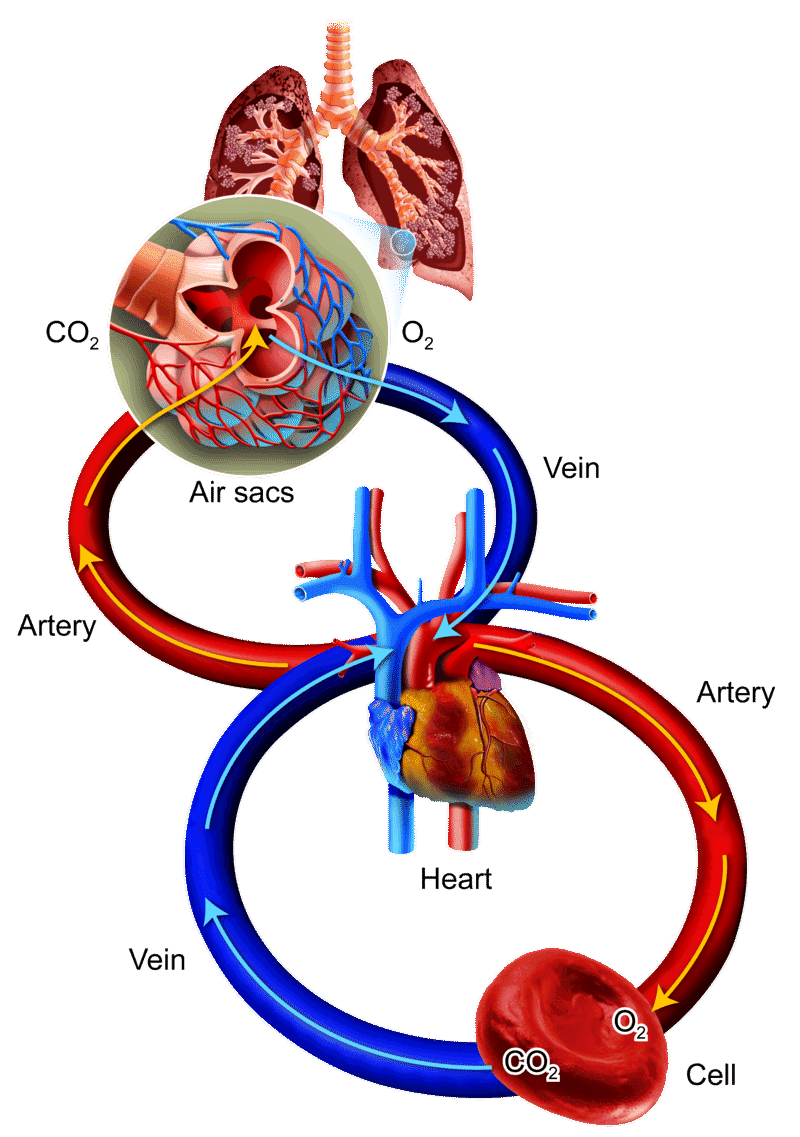Threats To Perfusion
Published (updated: ).

Perfusion is the passage of fluid through the circulatory system (blood stream) or lymphatic system to an organ or a tissue, usually referring to the delivery of blood to an area. Obviously, since the circulatory system transports oxygen and vital nutrients to the body’s cells, any interruption would result in certain death for millions of cells.
In order to get oxygen into the blood vessels from the environment, there has to be adequate amounts of oxygen to start with. Earth’s atmosphere contains 21% oxygen almost all the way into space, however the lower air pressure at higher altitudes affects the diffusion process that was so clearly intended to occur primarily at sea level. Various medical conditions and situations can find a person in a low oxygen environment. If the ambient air were to contain carbon monoxide, the patient could experience carbon monoxide poisoning.
Unconscious patients may experience difficulty ensuring the patency of the airway circuit (the pharynx, larynx, mainstem bronchi). EMS frequently encounter patients who are unconscious and vomiting. If the patient’s airway is filled with vomit or blood, the movement of air would be impaired. Further, the vomit may be pulled into the lungs during inhalation. The same fate is also reserved for patients’ who are experiencing a foreign body airway obstruction. Trauma to the airways can result in the same outcome. Unresolved airway obstructions generally result in death.
Ventilation, or breathing, is the movement of air through the conducting passages between the atmosphere and the lungs. The air moves through the passages because of pressure gradients that are produced by contraction of the diaphragm and thoracic muscles.
Inspiration (inhalation) is the process of taking air into the lungs. It is the active phase of ventilation because it is the result of muscle contraction. During inspiration, the diaphragm contracts and the thoracic cavity increases in volume. This decreases the intraalveolar pressure so that air flows into the lungs. Inspiration draws air into the lungs. Expiration (exhalation) is the process of letting air out of the lungs during the breathing cycle. During expiration, the relaxation of the diaphragm and elastic recoil of tissue decreases the thoracic volume and increases the intraalveolar pressure. Expiration pushes air out of the lungs.

The lungs require a connection to the respiratory centers of the brain; namely the medulla and pons. There must be a connection between the brain to the muscles of the lungs (the intercostals and diaphragm) which is accomplished by way of the spinal cord.
If there was damage to the brain, pons, or medulla the respiratory drive could be impaired resulting in fewer breaths taken or with a decreased volume of air. Some medications, namely narcotics (drugs derived from opium like heroin, morphine, and fentanyl). Without a certain amount of air volume making it’s way in and out of the lungs, the diffusion of oxygen and carbon dioxide would be limited and result in the patient being progressively hypoxic as the condition persisted.
If there were structural damage to the lungs, the ribs they are attached to, or the muscles that make them move a decrease of airflow would occur. The outcome would be the patient becoming progressively hypoxic. Examples would include:
- pneumothorax
- flail chest
- pulmonary contusion
Problems with the circulatory system would also result in decreased perfusion. Let’s say a patient’s left ventricle failed to eject all the oxygenated blood into the body. Where would it go (not where it needs to go). If a patient experienced blood loss resulting in fewer red blood cells to transport oxygenated blood to the body, the patients cells would suffer. If the blood vessels were to dilate without a commensurate increase in blood volume, the same lack of perfusion would be experienced by the patient.
